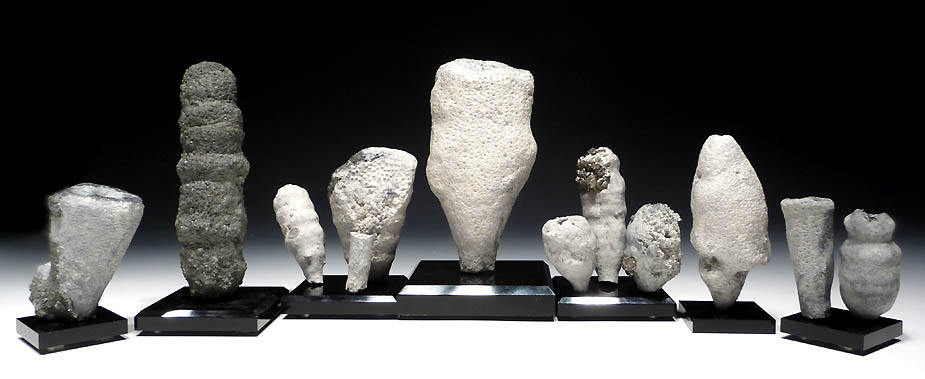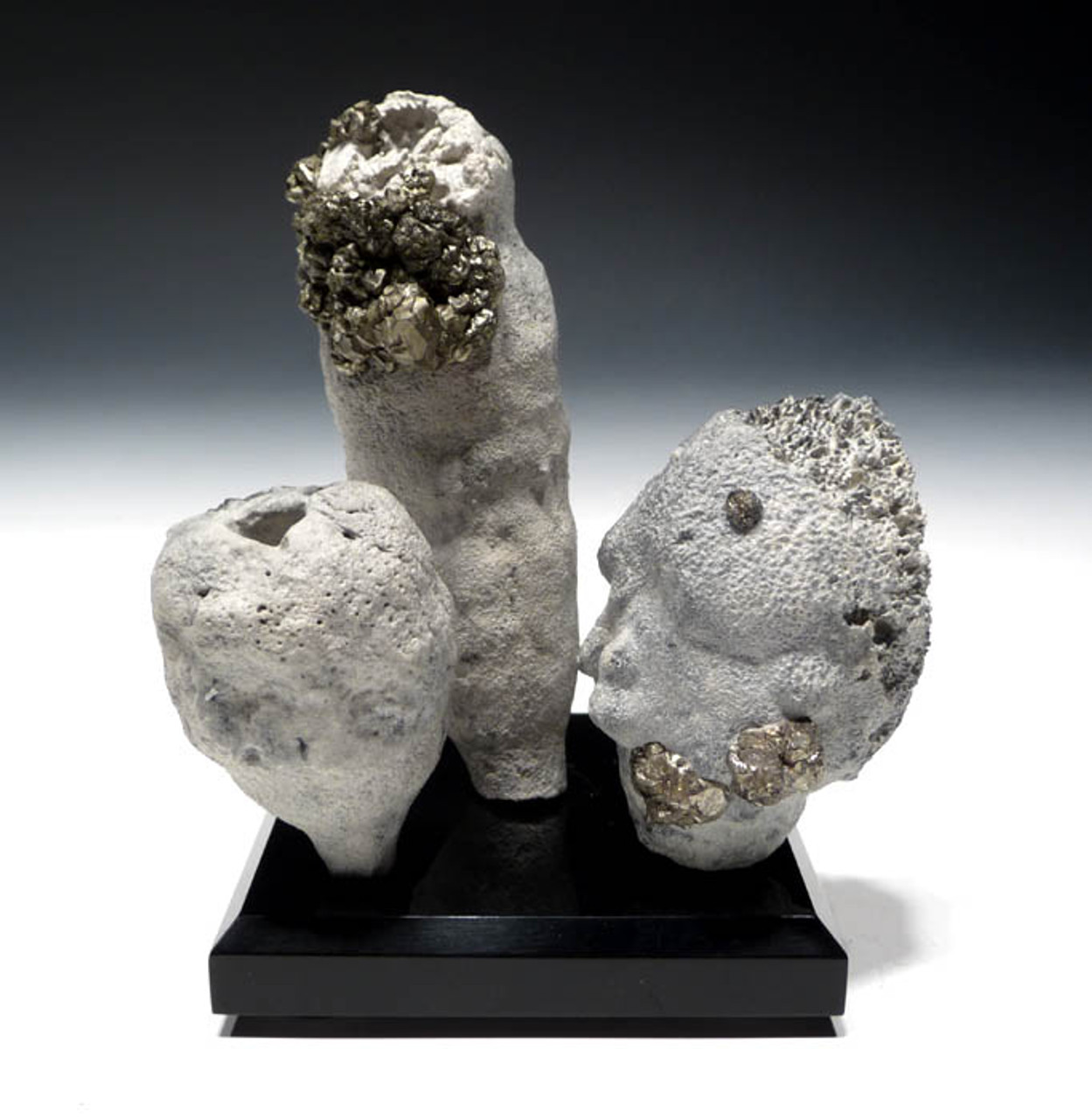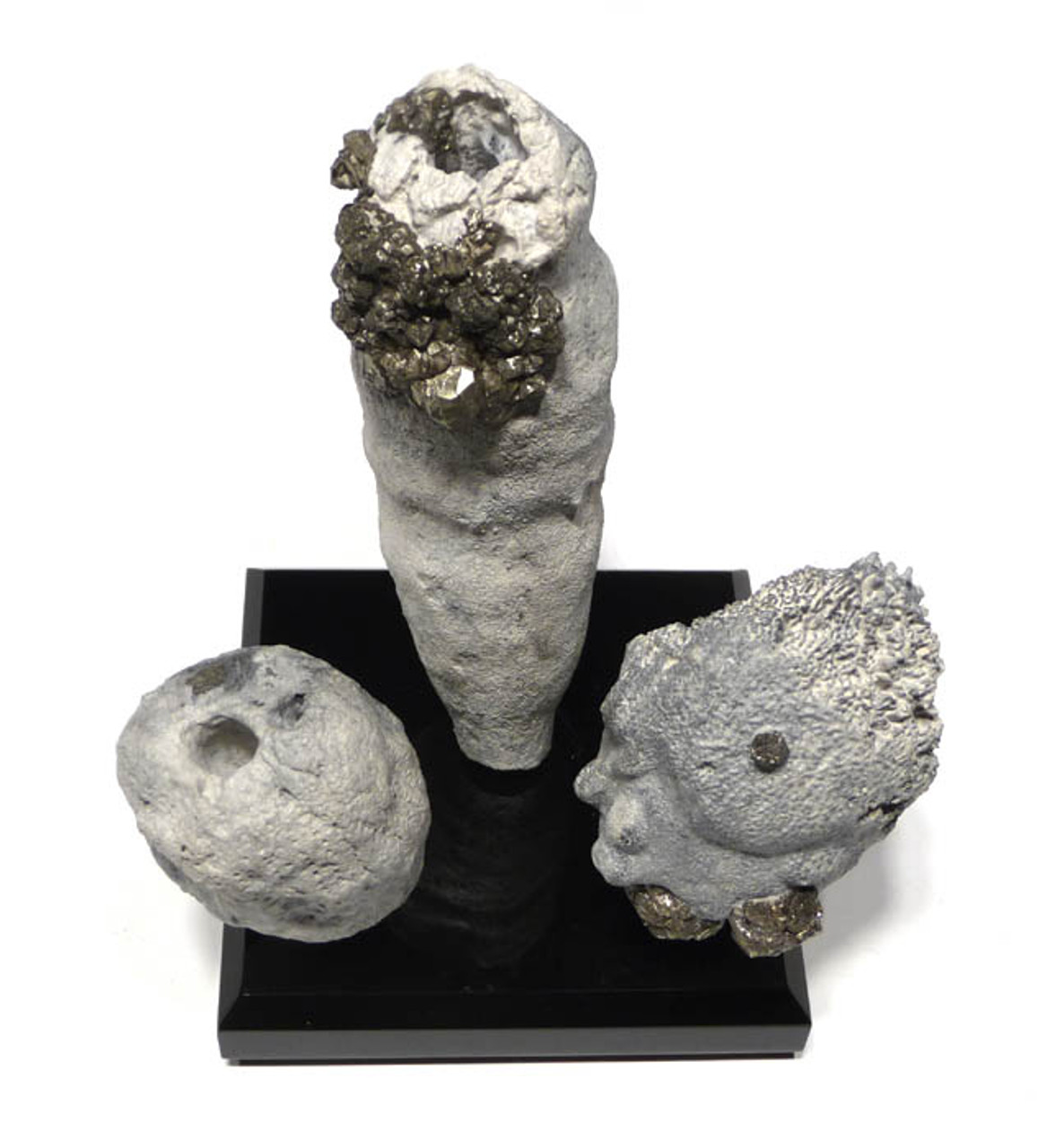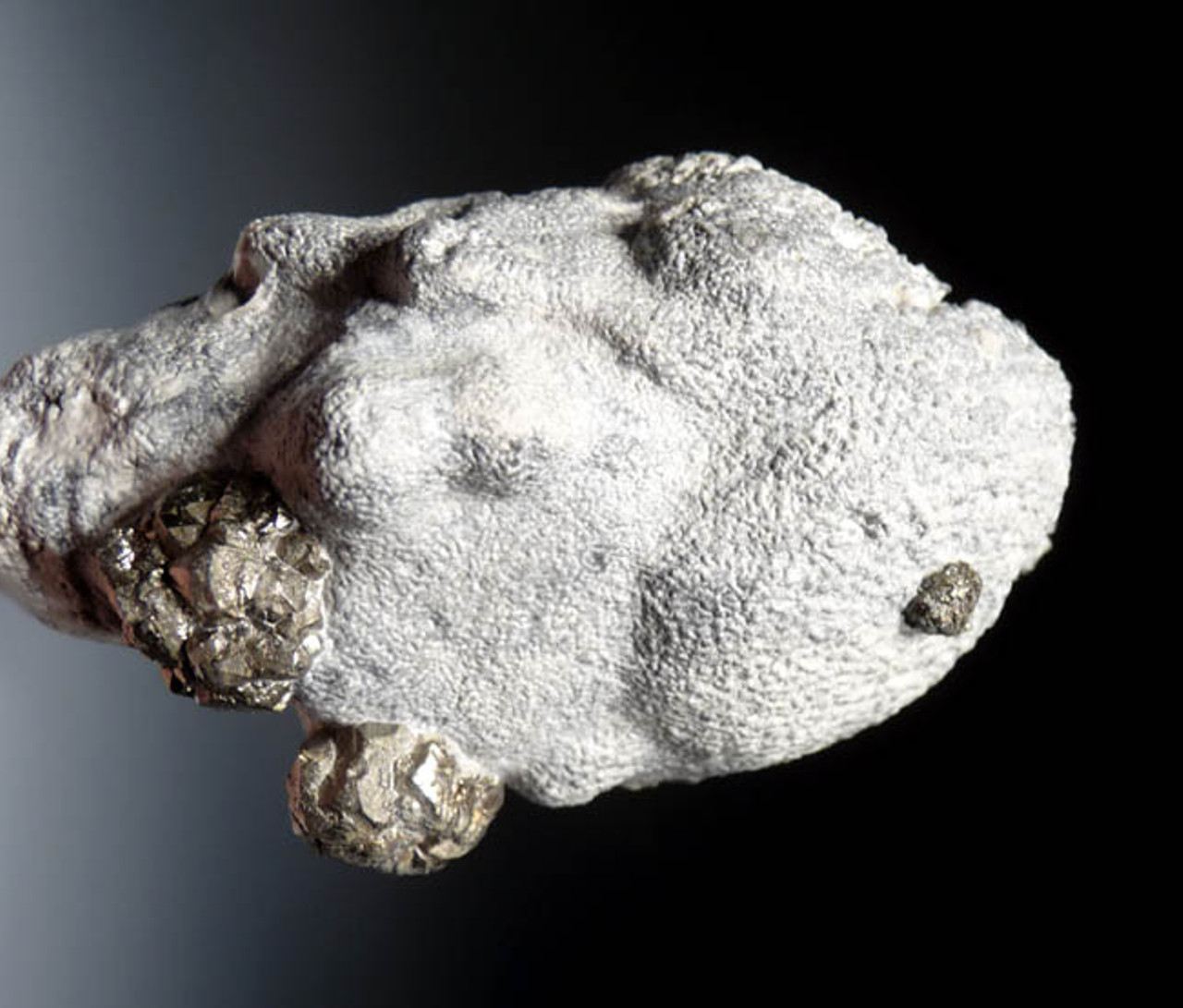Product Description
ITEM #
|
SP006
|
||
ID
|
Phymatella sp. and unidentified
|
||
FOUND
|
North Central Germany
|
||
AGE
|
UPPER CRETACEOUS: 83.5 - 71.3 million years ago
|
||
SIZE
|
3.7" - 2" high without stand
|
||
CONDITION
|
NO REPAIR OR RESTORATION
|
||
NOTE
|
STUNNING AND RARE 3D LIFE-LIKE
|
||
INCLUDES STAND - Actual Item - One Only
Comes with a certificate of authenticity / information sheet |
|||
CLICK HERE TO LEARN MORE ABOUT SPONGES
A very rare occurrence can be found in a unique Cretaceous fossil deposit in North Central Germany. A variety of highly unusual SEA SPONGE FOSSILS dating from a Campanian Era sea of the Cretaceous were preserved in FULL THREE DIMENSIONAL PRESERVATION retaining delicate anatomy seldom seen in prehistoric sponge fossils. The sponges found in this deposit comprise a very diverse breadth of anatomical varieties and nearly 180 different species. The fossils are found embedded in limestone host rock and were dug from subterranean deposits therefore, they were not exposed to the harsh elements and show no typical erosion or degradation of detail like so many sponge fossils of similar 3D preservation. These specific fossil sponges are so bizarre because the best specimens are completely lifelike with full three-dimensional preservation looking as if they were alive seconds ago before being turned to stone. We acquired a limited, old private collection of the finest specimens from the original excavator. When they are all gone, it is doubtful we will ever have this quality of sponge fossils to offer again.
The majority of the sponges we acquired are free from their matrix and show minute surface detail of all relative anatomy including the osculum (little mouth at top where the water was expelled), pores, pustules, bumps, internal chambers when broken, stem, signs of prehistoric predator damage incurred with once alive and in some cases, additional prehistoric life-forms attached to the outer surface. The color is natural white from the limestone with variations due to trace minerals.
This is an aesthetic prehistoric sea sponge "reef" of three different species of sponges all found together in what was once a massive sponge reef on the bottom of a Cretaceous sea. Two of the sponges are further beautified by large cubic pyrite crystals on the surface of their bodies. The sponges are examples of Phymatella sp. and they represent some of the various forms of this kind. The sponge on the right has predation damage which occurred while it was either alive or shortly after it died. This removal of the surface shows amazingly intricate internal cavity canals. The variety of these sponges displayed together recreate what a prehistoric sponge reef would have looked like with a fascinating mix of a broad range of species all thriving side by side on the ocean floor. A custom stand holds the sponges which are mounted to rods to allow the sponges to stand in the same position as they were when once alive. NO REPAIR OR FABRICATION! Extremely rare in this quality and with our highest recommendation for the ultimate in invertebrate marine life from the final days of the dinosaurs such as T. rex!
Regardless of your interests in fossil collecting, one cannot help being totally fascinated to be able to witness a fully preserved, life-like sponge in complete inflated form from the Cretaceous seas. You could make latex molds of the different varieties found at this locality and make casts that could be used in 100% accurate Cretaceous marine dioramas! If you could go back in time to the days of dinosaurs like Tyrannosaurus rex and dive into the ocean, this is some of the amazing ocean life you would witness! The state of preservation of these sponge fossils is nothing short of breath-taking! The vast majority of fossil sponges in the world are very, very poorly preserved and mostly represented by only fragments or badly eroded by elements. These sponges are unlike anything else we have ever encountered and their supply is extremely limited from this one, single locality. Once all of our limited collection are sold, it is likely you will never see such a realistic and phenomenal state of preservation in a fossilized sponge ever again!

 US DOLLAR
US DOLLAR
 EURO
EURO
 AUSTRALIAN DOLLAR
AUSTRALIAN DOLLAR
 CANADIAN DOLLAR
CANADIAN DOLLAR
 POUND STERLING
POUND STERLING


























